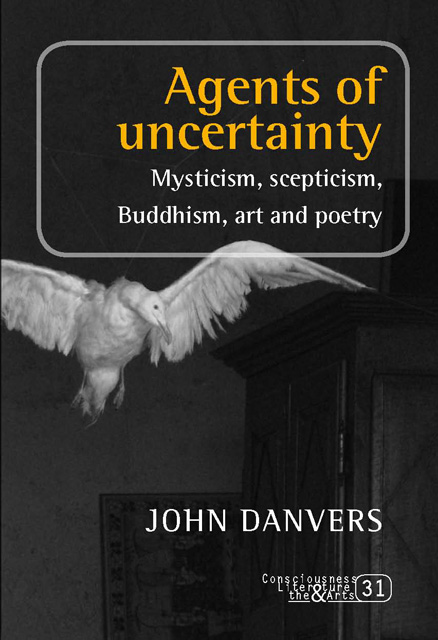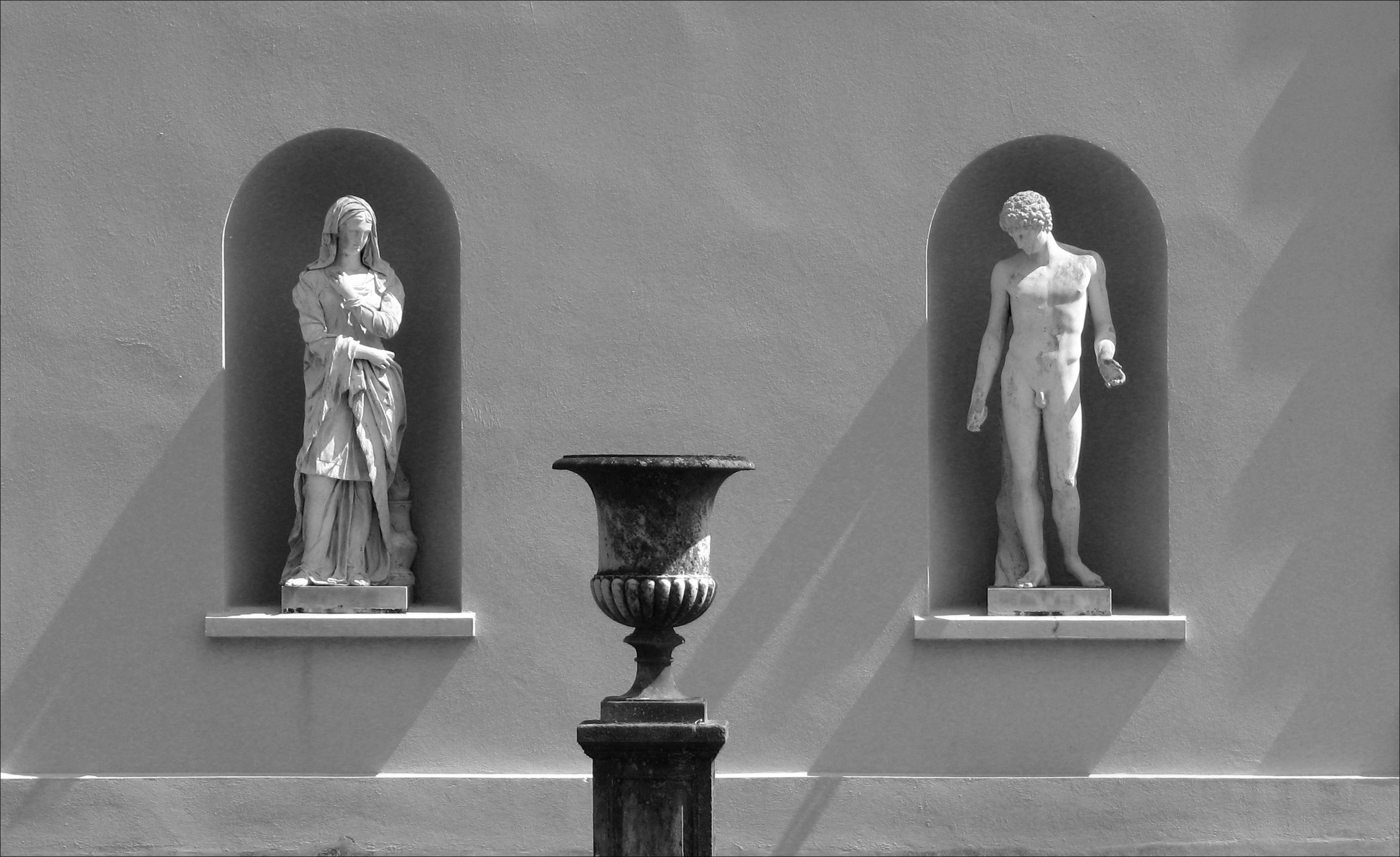
Copies are available from me at a much reduced price: £16 + postage.
If you would like to buy a copy contact me at: tjdanvers@googlemail.com
Note In this book, published by Rodopi in Spring 2012, I develop a few lines of thought touched on in Picturing mind. Notes prepared for the publisher include the following statement which gives a sense of the main themes.
Through an analysis of many different examples, Danvers articulates a new way of thinking about mysticism and scepticism, not as opposite poles of the philosophical spectrum, but as two fields of enquiry with overlapping aims and methods. Prompted by a deep sense of wonder at being alive, many mystics and sceptics, and the Buddha, practice disciplines of doubt in order to become free of attachment to fixed appearances, essences and viewpoints, and in doing so they find peace and equanimity. They develop ways of living with impermanence and the unexpected by letting go of adherence to dogmatic beliefs and by suspending judgement. In common with many artists and poets they act as agents of uncertainty, actively disturbing the routines and habits of day-to-day thought and behaviour in order to demonstrate how to maintain a sense of balance and spontaneity in the midst of life’s difficulties.
Topics explored include: being and self as process; mysticism and language; scepticism and dogmatism; Buddhism, interdependence and emptiness; Daoism and impermanence; the dialectics of doubt. Written in a lively and accessible style, accompanied by drawings and photographs by the author, this volume is aimed at scholars, artists, teachers, and anyone interested in philosophy, religion, art, poetry and ways of being.
Artists, poets and philosophers discussed, include: Marina Abramovic, Theodor Adorno, Roland Barthes, Stephen Batchelor, Samuel Beckett, Jacob Boehme, John Cage, Martin Creed, Don Cupitt, Derrida, John Dewey, Dogen, Meister Eckhart, T.S.Eliot, Antonio Lopez-Garcia, Hakuin, Heidegger, David Hume, Thomas Merton, W.S.Merwin, Montaigne, Pyrrho, Arvo Pärt, Ad Reinhardt, Spinoza, R.S.Thomas, Bill Viola, Simone Weil, Charles Wright.
 Brief pre-publication reviews of Agents of uncertainty:
Brief pre-publication reviews of Agents of uncertainty:
Stephen Batchelor:
Drawing from an extraordinary range of sources – mysticism, skepticism, philosophy, Buddhism and art – this highly original and provocative book articulates how a human life that has taken leave of the habitual certainties of religion and metaphysics can flourish in a vital and creative way. Agents of Uncertainty offers a tantalizing vision of a postmodern, post-creedal spirituality that shines through the work of many leading thinkers and artists of our time.
Stephen Batchelor has written many books on Buddhism. His most recent book is, Confession of a Buddhist Atheist.
Gay Watson:
In this wide-ranging exploration of mysticism, scepticism and artistic practice, John Danvers joins the distinguished company (Stephen Batchelor, Don Cupitt and Mark Vernon spring to mind) of those who are trying to encourage us to wake up to life as it is. The agents of uncertainty guide us towards acceptance of the contingency of reality, tracing a path between nihilism and unquestioning and outdated belief, while Danvers’ own artistic illustrations in word and line beautifully counterpoint the intellectual enquiry.
Dr. Gay Watson is the author of Beyond Happiness and The Resonance of Emptiness.
Martine Batchelor:
A wonderful text — rich in insights, poetry and creativity and at the same time deeply meditative.
Martine Batchelor, author of The Spirit of the Buddha and Women on the Buddhist Path.
A review by Prof. David Jaspers – for Literature and Theology Journal, Oxford University Press:
This is a clear, at times beautifully written series of reflections on traditions of ‘sceptical mysticism’ within both Western and eastern religious, literary, and philosophical traditions. The writer is at once an academic and an artist, and the commentaries— largely related to the Christian and Buddhist traditions—are interspersed with careful illustrations and passages from his own life and experiences, making this book both informative and a beautiful exercise in meditative thinking and practice. It would be an excellent book to offer to students or those seeking an introduction to the practice and literature of mysticism.
It may be correct to suggest that the great religious traditions have a common root in the mystical, with its sense of lying outside dogmatic affirmation, its resting in the ‘contrarium’, and its acceptance of scepticism and uncertainty. The art of living with uncertainty is also within the insights and texts of world literature, music, and art—from Montaigne and Jacob Boehme to Beckett, to John Cage, Arvo Part, and Ad Reinhardt. All of these creative souls are given clear and gentle attention, and for this we should be grateful. Perhaps it is because the voice of the author is himself one of this company as an artist. What they all finally recognise is that ‘mysticism’ is deeply rooted, far more than most of us ever can be, in the present and in ‘being here’ most fully and attentively, and that our hurried and over complicated scepticisms and confusions arise from our unwillingness (or is this a kind of laziness?) to rest between the languages of saying and unsaying. One voice that echoes throughout the book is that of Thomas Merton, a Christian monk who recognises his deep affinities with the spirituality of both the Buddhist and the Daoist traditions, and one who knew well in his own life the busy world of the city and the silence of solitary contemplation, the ‘saying’ balanced (not always comfortably and certainly not easily) with the ‘unsaying’.
There is a critical edge to this book which is useful and illuminating. For example, in Part II, Danvers offers a comment on the relationship between mysticism and the critics of postmodernity, such as John D. Caputo, Jacques Derrida, and Don Cupitt. In particular the latter’s book Mysticism after Modernity (1998) is well characterized as an exercise which is at once insightful and at the same time suffers from a ‘dogmatic rhetoric’ (p. 74) that may only be stylistic, but yet detracts from the genuine insights of its commentary. The point is well made, for within the discourses of mysticism how things are said are as important as what is said (and Cupitt, of course, knows this very well himself). This is why the poets and artists are so central to Danvers’ work and practice.
If I have a criticism it may be that Part IV on the sceptical mysticism of Buddhism and Daoism comes across a little too much in the manner of an explanatory textbook, though there is value in that. It may be a sign, however, that such intercultural and inter-faith exercises are more difficult and elusive than we are often prepared to admit, and then comparisons become a little too simple and obvious. But this may be too harsh. We all speak from a particular vantage point, both critically and culturally, and we necessarily construct our own models in our recognition of kindred spirits from other worlds. This does not finally detract from the real value and often moving quality of this book and its sense of the art of living with uncertainty whereby the discipline of not-knowing is as necessary and as difficult as the discipline of knowing.
This book is an excellent example of literature and religion living in final harmony in the coincidence of opposites. I am grateful for it.
Downloaded from http://litthe.oxfordjournals.org/ at Unversity of Exeter on May 23, 2013. Literature & Theology, 2013, pp. 1–2. Published by Oxford University Press 2013; all rights reserved.
Publication details:
Agents of uncertainty: mysticism, scepticism, Buddhism, art and poetry.
Danvers, John. Rodopi: Amsterdam/New York, NY, 2012, 219 pp. May 2012.
Illustrations by the author. ISBN: 978-90-420-3512-6
More information about Buddhism and scepticism can be found at: http://www.scepticalbuddhism.com/